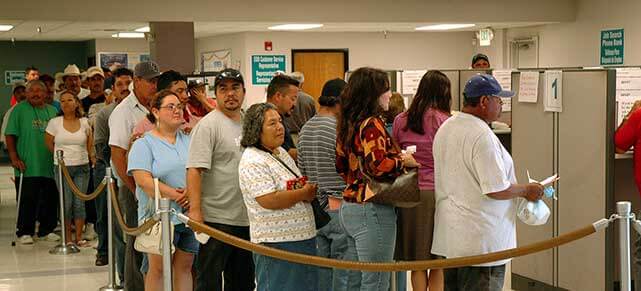Older workers who have lived in Canada for decades are finding that their status as “immigrants” may never fully disappear.
Research released by the Centre for Labor Management Relations in June found that retraining programs are not working for older immigrant workers, leaving them in a worse economic situation than they were when they first arrived in Canada.
“For a lot of vulnerable and marginalized workers, the recession has not ended,” said Winnie Ng, the CAW-Sam Gindin Chair in Social Justice and Democracy at Ryerson University. The concepts of “settlement” and “integration” are not as straightforward as many people think, especially during tough economic times, she added.
The report, “An Immigrant All Over Again,” follows a group of older, immigrant workers for five years after Progressive Moulded Products (PMP), an auto-parts manufacturing plant, laid off 2,400 workers from 11 facilities in Vaughan, Ontario in 2008.
Ninety-seven per cent of the workers who participated in the study were born outside of Canada, 57 per cent were over 40 years old and 71 per cent had lived in Canada for longer than 10 years.
Five years after losing their jobs, only one third had full-time employment and 77 per cent had lower wages than when they worked at PMP. A full two thirds of the participants said they were either precariously employed or unemployed – 80 per cent were women.
Holding a long-term, non-precarious job for decades in a new country may be considered successful settlement and integration, but the recession and the subsequent loss of manufacturing jobs have reverted many people back to an “immigrant” or “newcomer” status, said Ng.
When immigrant workers stay at the same job for decades, often interacting with the same group of workers, they don’t have a need to upgrade their skills. This leaves them in a vulnerable position when those jobs disappear, said Wendy Tanner, director of employment services with the Labour Education Centre, and past coordinator of the PMP Workers Action Centre.
But Ng’s research shows that older immigrant workers have had a harder time finding work even after they have retrained for new careers. Out of the 51 per cent of those who completed second career training, only 25 per cent found employment in their new fields – the rest either returned to the manufacturing sector or are unemployed.
After retraining in a logistics program at Seneca College, one participant was told that he was over-qualified by one employer and under-qualified by another, leaving him no choice but to work at Tim Horton’s, said Tanner.
This points to the possibility that this group of workers is facing double discrimination based on their age and race.
Employer perception, especially for immigrant workers, is a major barrier, she said. Even with funding to offset training costs, convincing employers to hire them is a “tough sell,” said Tanner. “There is discrimination, let’s face it…. And it’s not about the individual; it’s systemic stuff that is really hard to get over,” she added.
Older workers across the board have a hard time getting hired, she said. “Once you get to a certain age and look a certain age, employers don’t want to hire you.”
The problem is that unemployment rates are also high for young workers, meaning the labour market is flooded with over-qualified people who are willing to do temporary, low-wage work, said Tanner.
Not only is temporary work becoming more common, but temp agencies are becoming more selective, said Ng. “You have to pass the English and math exams to do the same work you were doing before,” she said.
Tanner said this group of workers brings a crucial level of maturity, skill and dedication to their jobs that employers are passing up by not hiring them. “These people have proven themselves in the workplace. They have what it takes to improve your business,” she said.







